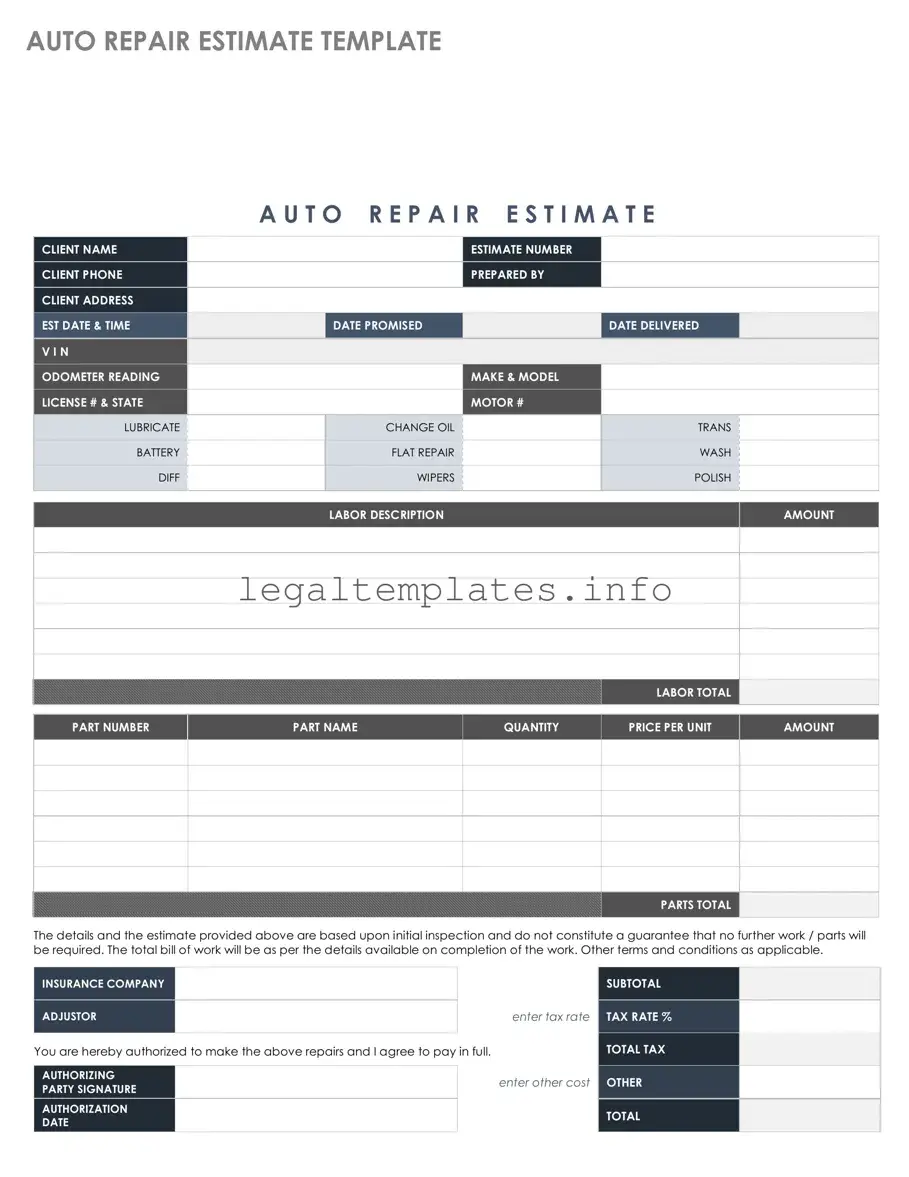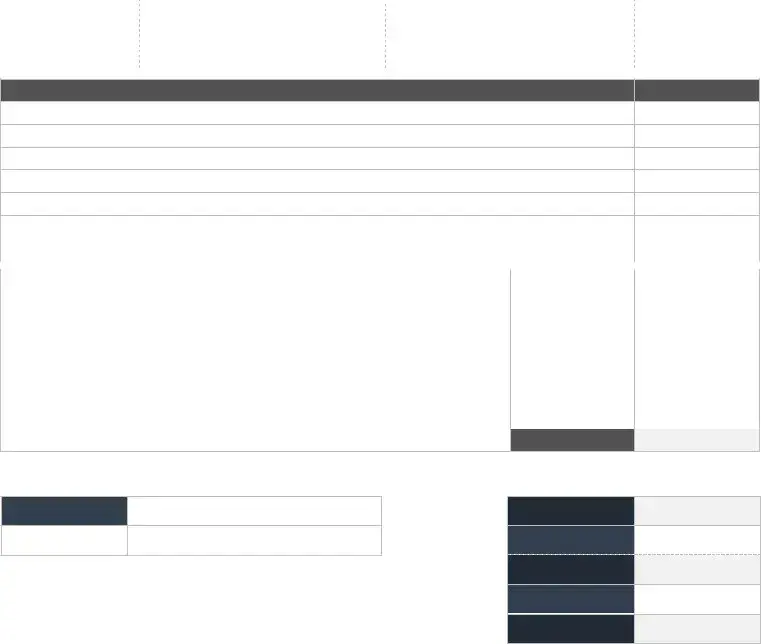The Auto Repair Estimate form shares similarities with a Home Repair Estimate document. Both are used to give clients an approximation of the costs involved in repairing either a vehicle or a property. They provide detailed breakdowns of labor, parts, and other expenses. These documents are crucial in helping clients make informed decisions about proceeding with repairs.
Similarly, a Job Quote Form functions like the Auto Repair Estimate, but it spans across various industries. It outlines the costs for specific services or jobs that a business may offer. From graphic design to plumbing work, the Job Quote Form provides potential clients with a detailed outline of the expenses involved before any work begins, ensuring transparency and trust in the transaction.
An Invoice document also bears resemblance to the Auto Repair Estimate form. An invoice is issued after services have been rendered, indicating the amount due for payment. Although it is used at a different stage of the client engagement process—post-service rather than pre-service—it plays an equally vital role in detailing the costs of the services provided.
A Service Agreement is another document related to the Auto Repair Estimate form. While the repair estimate outlines potential costs, a Service Agreement outlines the terms and conditions of the repair service being offered, including scope of work, timelines, and payment terms. It's a more comprehensive document that often incorporates the initial estimate as part of its contents.
The Parts and Labor Invoice is particularly relevant to auto repair services. It provides a detailed list of parts and labor costs separately after the repair job has been completed. This specificity aids clients in understanding exactly what they are being charged for, similar to how an Auto Repair Estimate breaks down anticipated costs.
A Vehicle Service Order mirrors the functionality of an Auto Repair Estimate by documenting the specific services a vehicle will receive. However, it is often more detailed regarding the actual services performed and is used once a client agrees to the repairs, functioning as an order form for the mechanics to follow.
A Warranty Document can also be associated with the Auto Repair Estimate form. It outlines the guarantee provided on the parts and services quoted in the estimate. This document ensures clients are aware of their rights and the coverage period for repairs, adding an extra layer of assurance and confidence in the services provided.
A Proposal Document for contract work follows a similar purpose to the Auto Repair Estimate but is used in a wider array of industries including construction, consultancy, and IT services. It offers a potential client a detailed overview of the work to be done, the costs involved, and the timeline, aiming to secure a contract based on the proposed terms.
A Change Order Form is akin to the Auto Repair Estimate when modifications to the initially agreed upon services or costs are necessary. In the midst of a repair project, if additional work is needed or unforeseen costs arise, this document formalizes the changes and adjustments in scope and price, ensuring both parties agree to the amendments.
Last but not least, the Pre-Service Checklist serves a purpose similar to that of an Auto Repair Estimate, although it is more focused on diagnostics than costs. This checklist itemizes the areas of a vehicle to be examined before repair work begins, helping to identify potential issues and influencing the accuracy of the estimate provided.

